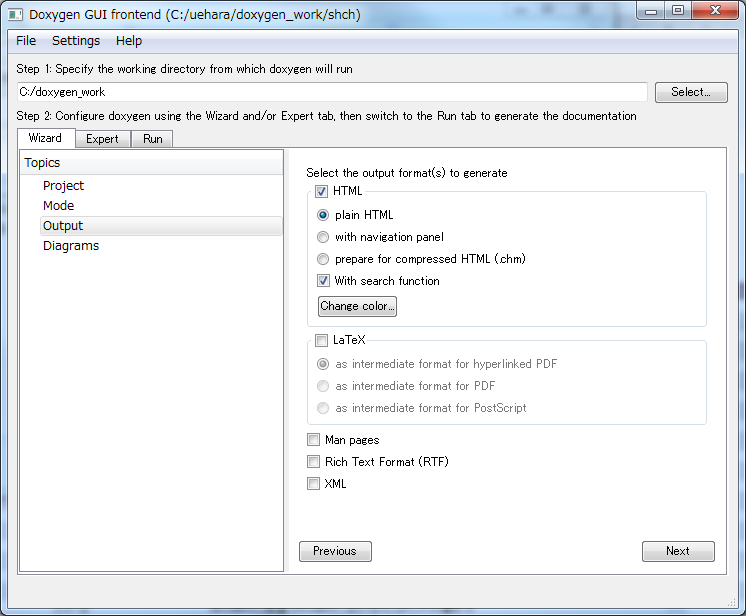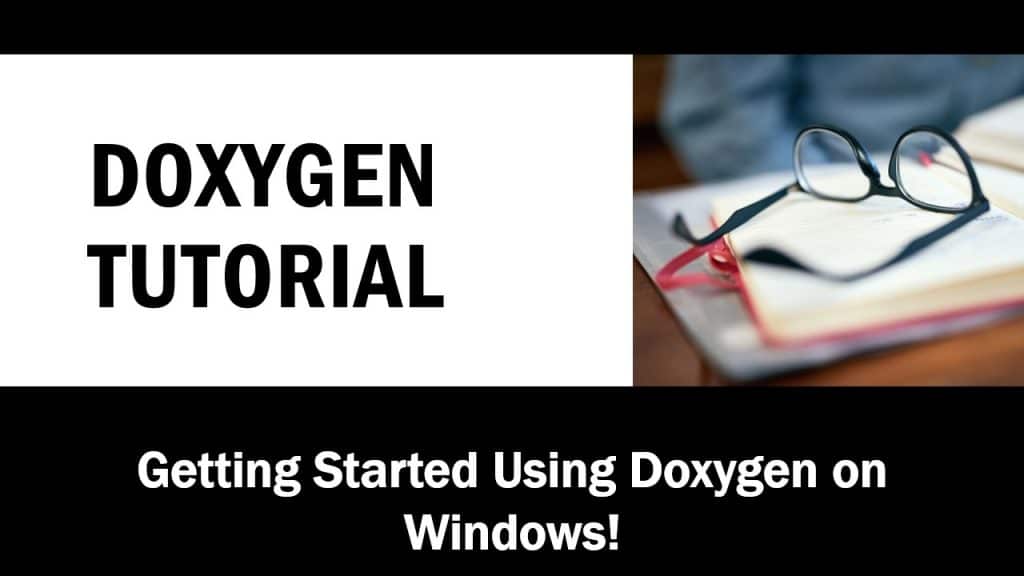

* because this text is basically saying nothing. * is totally senseless and you really do not need to read this, * \details This function does something which is doing nothing.
#Doxygen pdf full
Details followĪnd finally here an example for a full documentation of a function with doxygen: /** / Brief description which ends at this dot. If JAVADOC_AUTOBRIEF is set to YES in the configuration file, then using JavaDoc style comment blocks will automatically start a brief description which ends at the first dot followed by a space or new line. This command ends at the end of a paragraph, so the detailed description follows after an empty line. One could use the \brief command with one of the above comment blocks. * A brief description in one short sentence.įor the brief description there are also several possibilities: * \brief A brief description in one short sentence. All commands in the documentation start with a backslash () or an at-sign example /** To structure and fomat the generated documentation, Doxygen provides a large number (> 170) of special commands. Note the 2 slashes to end the normal comment block and start a special comment block.

Some people like to make their comment blocks more visible in the documentation. The next alternative is to use the Qt style and add an exclamation mark (!) after the opening sequence of a C-style comment block: /*!Ī third alternative is to use a block of at least two C++ comment lines, where each line starts with an additional slash or an exclamation mark: /// The first and most common one are C style comments with an extra asterisk in the comment start sequence, e.g.: /**
#Doxygen pdf code
There are several ways to mark a comment block as a detailed description, so that this comment block is parsed by Doxygen and added as a description of the following code item to the documentation. Since the Documentation for doxygen is new, you may need to create initial versions of those related topics. It should also mention any large subjects within doxygen, and link out to the related topics. Great! Let’s fix that next.This section provides an overview of what doxygen is, and why a developer might want to use it. You should be getting some warnings that things are not documented like: Compound: Foo is not documented You can also verify in the build/Doxyfile.out file that the INPUT and OUTPUT_DIRECTORY paths have been set correctly. Opening up index.html gives you your shiny documentation website. Using any method, in the build directory you should find a new folder docs_doxygen. Use the command line - in the build directory:.In Visual Studio, run in the command pallette CMake: Build Target and select the docs target (probably at the very bottom).Switch the target to docs and you should see some errors about the docs! Open the Xcode project in the build directory. You could add the ALL flag instead if you always want to build the docs (but do you really want to see all those warnings?). Here, we made a new custom build target called `docs` which will build the docs. This won’t run by itself, because it needs the flags from CMake to understand the input/output.Įdit your CMakeLists.txt to append to the bottom: With this option, docs will be generated from all the headers in the include directory. INPUT = Note that CMAKE_CURRENT_SOURCE_DIR is the main directory in this case, and we set PROJECT_INCLUDE_DIR to be the include directory from before.OUTPUT_DIRECTORY = - Note that CMAKE_CURRENT_BINARY_DIR is the build directory in this case.Now the actual heart of the docs generation: EXTRACT_PRIVATE = YES - not always on per default, but required to also extract private members.



 0 kommentar(er)
0 kommentar(er)
